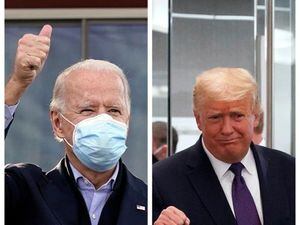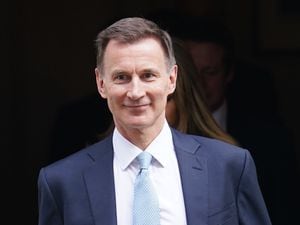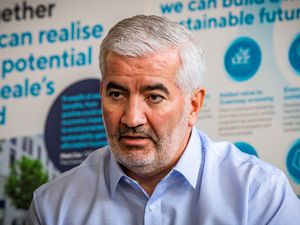Fireworks for the guys on Fox
Fahad Kamal, chief investment officer, at Kleinwort Hambros, sets out his analysis of the economy to the backdrop of the US election and Covid-19

THE US election - an event of furious speculation and prognostication - has passed. Pollsters have been confounded once again - expectations were for a landslide Democratic victory - despite their efforts to 'correct' for their similar failure four years prior. In the immediate aftermath there is no declared winner. Moreover, the outcome is yet to be announced in some critical swing states, and is bitterly challenged in others where the incumbent President has been declared a loser.
Had this outcome been known in advance via a magic crystal ball, how would one have reasonably expected markets to react? In truth, few would have forecast the +1.2%, +1.8 and +2.2% gains for the S&P 500 that occurred on the day prior, the day of and the day after the 4 November election.
Ex-post explanations abound: a divided Congress should lead to policy 'moderation' on all sides; tax rates can’t be hiked without a Democratic senate; with the election over, cooler heads will finally agree to the stalled fiscal stimulus package. Ex-post analysis is easy. In any event, the election is not over, and neither is the short-term volatility. Nonetheless, we have always maintained - based on evidence - the impossibility of divining geopolitical outcomes, and the double-impossibility of knowing the subsequent market impact.
Let us be clear: we remain deeply attentive to the developments in the US but prefer to focus on the things we can measure and which have actual efficacy when it comes to guiding us as investors. After all, the US remains the world’s largest single economy and home to well over half of the global equity market capitalisation. Therefore, economic activity there acts as an anchor for growth elsewhere and sets the pace for asset price returns globally.
This pandemic-ravaged year may well be the most fascinating in the States’ economic history; it certainly is record breaking. US GDP grew 7.4% in the third quarter, by far the strongest ever recorded (the previous record was 3.9% in 1950). Nonetheless, after falling 1.3% in Q1 and 9% in Q2, the economy remains 3.5% smaller than at the end of 2019. For comparison, GDP shrank 4% over the entire six quarters of the Great Recession of 2008/09.
This reveals a US economy - and by extension the world - at a nuanced and delicately poised juncture. Effectively, the US is no longer in recession, and by the headline GDP figure experiencing a breath-taking surge. However, it is also still far below its pre-coronavirus peak, with high unemployment and underemployment, and major dislocations. For example, US consumer spending on services in Q3 was an annualised $660bn lower than in late 2019, while spending on goods was up $325bn. Overall, spending remains about 3% percent below pre-pandemic levels.
Of course, the real driving factor behind much of what is being witnessed in the data remains the course of the ongoing Covid-19 pandemic, not the election. Unsurprisingly, there is a high degree of nuance here too. In the week ending October 28, there were on average 75,561 cases per day in the US, the highest at any point in this crisis and a 41% surge from two weeks earlier. Yet, at the same time, the number of hospitalisations was 11 for every 100,000 Americans, well below the peak of 18 recorded in the spring. Deaths, thankfully, remain lower still – the seven-day average to October 28 is 786 compared with highs of 2,232 in April.
There are two key questions which will determine the outcome for the economy. One, will rising hospitalisations overwhelm health systems, forcing a lockdown? Two, even if they do not overwhelm the health infrastructure, will the rising hospitalisations lead to increased deaths? If the answer to either question is 'yes', this may well lead to a similar lockdown of the US economy as we saw in April and May and a likely fall back into recession. If the answer to both is 'no', the economy will continue to recover, albeit slowly and unevenly with widely divergent outcomes for various sectors.
There are some critical reasons for optimism. Regarding the first question, there is clear evidence from China, Taiwan, Korea, Japan, Australia and New Zealand (to name a few), where countries can regain relative control from troubling Covid-19 transmission. In the US, a marked improvement can come from basic steps such as increased mask-usage, which may become less politicised now that the election is over. A more enduring return to something resembling normal will require effective 'track-and-trace' procedures. If countries ranging from Canada to Vietnam, and islands such as Guernsey and Jersey, can do it so can the US (and the UK for that matter).
As to the second question, reports suggest that death rates among hospitalised patients in New York have dropped from 25-30% in the spring to 3-8% in recent months, and a similar trend has been observed across Europe. A combination of factors have contributed to the improved outcomes for hospital patients, chiefly the lessons learned by doctors during the first wave and the development of better treatment protocols using steroid drugs and non-drug interventions.
Bottom Line
Our base case remains that we will see slow, uneven growth but no double-dip US recession as full lockdowns will not be repeated. Of course, if hospitalisations or deaths become unbearable, a full US lockdown may become inevitable, and our view for the US will have proven too optimistic. Countries such as the UK, Germany and France, which have instituted new lockdowns in late-October, give us plenty of reason to question our base case.
On the other hand, we could also prove to be too conservative, given each day we get closer to an eventual vaccine which could be widely distributed as early as by Q2 2021. Even without one, China and much of East Asia - countries which range across the socio-political spectrum - appear to be in a 'post-pandemic, new normal', so there is a possible path of strong economic growth even without a panacea.
Over the third quarter, we have begun adding to risk assets following our reduction during the seismic ructions in markets early in the year. As always, we are guided by our investment process, one pillar of which is the economic regime we are in. Nonetheless, we remain underweight risk assets compared to our benchmarks. We recognise that the current market backdrop remains more uncertain than usual and volatility is still elevated - therefore we are treading cautiously, even as we are increasingly optimistic.





